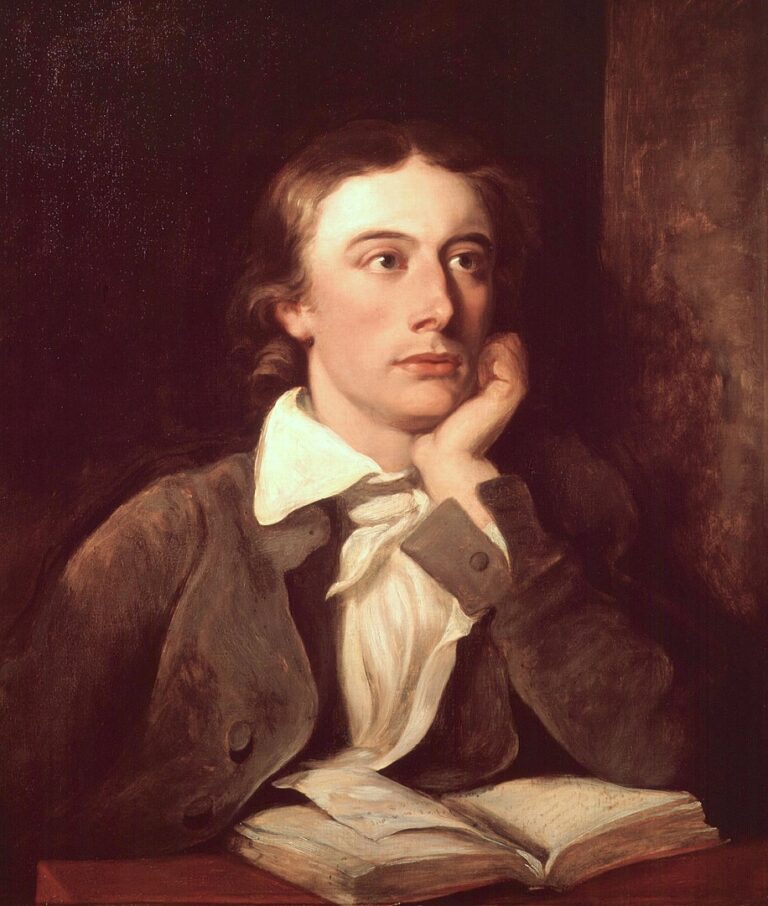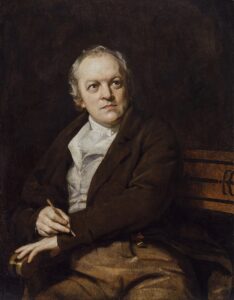John Keats As a Poet: Overview of His Life Journey & Great Poems
Introduction
Keats was an English Romantic poet whose work has been celebrated and admired for centuries. His life was full of tragedy, yet his poems left an indelible mark on literature and art. Although Keats died at the young age of 25, he managed to leave behind some of the greatest works of poetry that are still celebrated today. This article will provide an overview of John Keats’s life journey and a look into some of his most famous romantic poems.
The first part of this article will give readers insight into Keat’s turbulent childhood and how it influenced his later writing. John Keats was raised by two loving but struggling parents who often found themselves financially strained due to their poor health. Despite these struggles, Keats was surrounded by books from an early age and developed a love for reading which would stay with him throughout his lifetime.
Finally, several great poems written by John Keats during different stages of his short-lived life will be explored in depth. From “Ode to a Nightingale” to “La Belle Dame sans Merci,” each poem reveals more about not only the author’s innermost thoughts but also the greater themes present in Romantic poetry: mortality, nature, beauty, sorrowful longing and so much more. By delving deeper into these pieces we can gain further insight into the man himself and what made him one of history’s most beloved poets.
Early Life And Education Of John Keats
John Keats was born in London on October 31, 1795, to Frances Jennings and Thomas Keats. His father worked as a livery stable manager, while his mother came from a family of prosperous tea merchants. At the age of eight, he started attending John Clarke’s school, where he learned Latin and Greek classics. As a young man, he studied with Reverend Joseph Sever at Enfield School, which introduced him to the Cockney School of Poetry.
During his early years, Keats had formed close relationships with George and Tom Keats – two of his brothers – and Fanny Brawne, whom he later fell in love with. His poetic career began when he met Leigh Hunt who published some of Keats’s poetry in The Examiner newspaper. Later on, John Gibson Lockhart wrote about him favorably in Blackwood’s Magazine, raising readers’ awareness that a new voice was emerging within the School of Poetry.
Keats drew inspiration for writing poetry from William Shakespeare, Edmund Spenser, Ben Jonson, Percy Shelley, and particularly John Milton whose influence can be seen throughout many of his pieces such as “The Eve Of St Agnes” or “Hyperion,”; both being widely accepted by critics as masterpieces that showcase the height of Romanticism during this period. With these highly acclaimed poems coupled with other great works like “La Belle Dame sans Merci,” it is no wonder why John Keats remains one of the most beloved poets today, more than 200 years after his death.
Themes Of John Keats Poems
The life journey of John Keats was full of tragedy, yet his poetic style flourished despite this adversity. This section examines some of the themes that are prominent throughout his body of work.
Keats wrote his first poem at age fourteen and had written many more by the time he left for Rome due to ill health in 1820. During these months, he produced some of his best works, including ‘Ode on a Grecian Urn’, ‘La Belle Dame sans Merci’ and ‘To Autumn’. He explored themes such as mortality, beauty, love, nature and death through powerful imagery and lyrical language. In addition, noted literary critic John Ruskin observed that Keats had an “extraordinary sensibility” when exploring emotions like pain or joy.
The poet also drew inspiration from ancient mythology which allowed him to delve into existential questions about human existence—such as why do we live if our lives eventually end? These musings can be seen in poems like ‘Hyperion’ or ‘Endymion’. As well as being preoccupied with life’s fragility, Keats often celebrated its beauty too; writing about how Nature has the power to heal us emotionally and spiritually.
For example, in ‘To Solitude’ he expresses contentment with spending time alone outdoors: “No sound but Silence reigns around/Unbroken let me still abide”.
The idea of love is also present in many of Keats’ poems, with the poet exploring both the joys and sorrows of unrequited love. In ‘La Belle Dame sans Merci’, Keats tells the story of a knight who falls in love with an unattainable lady who eventually leaves him brokenhearted. Likewise, in ‘Ode to a Nightingale’, Keats explores the idea of an unattainable beauty that can only be experienced through music.
In both cases, the poet expresses his longing for a love that cannot be found in physical form.
Major Poetic Works of John Keats As a Poet
At a young age, he faced a tragedy that ultimately shaped and influenced his writing style. Born in London in 1795, Keats lost both parents by the time he was fourteen years old; his mother died of tuberculosis when he was eight, while his father died soon after due to an accident.
After being placed in the care of two men – Richard Abbey and John Hammond Reynolds – who introduced him to literature at an early stage, Keats moved into a house owned by Charles Cowden Clarke, who further encouraged Keats’ interest in poetry. Later on, Keats met Joseph Severn, who would become his friend for life and travel companion until he sadly succumbed to tuberculosis at the tender age of 25 in Rome.
Keats left behind a remarkable collection of poems that draw upon themes such as nature, death, and love, with symbols like birds, trees and flowers often featuring prominently. His works are renowned for their beauty and musicality, which can be seen through some of his best-known pieces such as “Ode to a Nightingale”, “Ode on a Grecian Urn” and “When I Have Fears.”
In particular, “Ode to a Nightingale” depicts how humanity relates to nature: its focus on mortality coupled with exquisite imagery has inspired many other writers over the centuries since its publication in 1819.
Similarly, “Ode on A Grecian Urn” examines how art can influence our view of beautiful objects as immortal despite their impermanence. This idea reflects Keat’s longing for immortality and humanity’s universal desire for lasting things.
Lastly, “When I have fears” undoubtedly shows us why Keats is revered even today; within these lines, we can see fear come alive along with ideas about ambition versus reality portrayed powerfully by vivid metaphors.
This collection of poetic works serves as a testament to John Keat’s impressive skill as a poet; moreover, they demonstrate how he seemed far beyond what could have been expected from someone so young during his period. By using words that spoke deeply and personally yet still universally relatable regardless of era or background, it is no wonder why more than 200 years later, John Keats remains highly regarded among greats like William Wordsworth or Percy Shelley.
Influence On The Romantic Movement And Poetry
His early life and devotion to poetry greatly influenced the movement, leaving an enduring legacy that continues to this day. Here are four key points about his impact:
- Fanny Keats was instrumental in nurturing her brother’s poetic talent from a young age; she was John Jennings’ pupil and Richard Abbey’s friend who helped nurse him when he became ill later in life.
- As a young poet, Keats often spent time with other influential artists such as Mary Sheepshanks and Charles Brown. He devoted much of his energy to reading, writing, and discussing works of poetry by writers like Homer, Virgil, and Shakespeare, which influenced his works.
- Criticism of Keats was pervasive throughout his career, but he never lost sight of his self-belief or the originality of his work. It may have been this criticism that motivated him even more strongly to continue exploring new ideas through experimental techniques.
- One example of this unique approach can be seen in “Ode on a Grecian Urn,” where Keats describes how beauty will endure forever while mortality fades away – “Beauty is truth, truth beauty,—that is all / Ye know on earth, and all ye need to know.” This poem has become one of the most iconic lines ever written by any poet under the name ‘John Keats.’ His words still reverberate today as we recognize their relevance to understanding our place in society.
It is clear then why so many consider John Keats such an important figure within the context of literary history – not just because he wrote some beautiful works but also due to the way these were crafted using innovative techniques which resonate deeply with readers across generations. His unwavering commitment to creating something truly special despite facing adversity makes him worthy of being celebrated as one of England’s finest poets whose name was writ in water.
Recognition And Awards
His recognition and awards are a testament to this fact. Like a beacon of light in the darkness, Keats’s poetic works have come to define the genre.
Keats believed fame was like a star that shone brightly forever once attained; he sought it with determination and dedication throughout his life. In 1817, at age 19, he published his first volume of poems entitled Poems by John Keats, which received praise from fellow writers such as William Wordsworth and Sir Walter Scott. The book earned him some degree of recognition among literary circles. Still, it wasn’t until two years later when Endymion: A Poetic Romance was released that people began to take notice of his talent.
Endymion was met with both criticisms for its grandiosity and admiration for its beauty – ultimately making it one of the most iconic works in English literature today. This poem brought John Keats considerable acclaim in Britain, Europe, and even America, where he gained numerous admirers including Edgar Allan Poe who described him as “the most spiritual of all poets.” He won several awards over time including The Chancellor’s Gold Medal by Oxford University in 1820 for Ode to a Nightingale – arguably his best-known work – proving that Keats achieved immortalization through sheer brilliance if nothing else could secure it for him.
Death And Its Significance
His life and works are remembered today for their contribution to the literary world during this era. Death had a great significance in his work, as he often wrote about its inevitability.
He died of tuberculosis when he was just 25 years old. Although he never married nor had children, his brother Tom Keats acted as guardian of his estate after his passing. As time has gone by, Keats’ death has been seen not only as tragic but also as meaningful in that it allowed him to be memorialized in literature for eternity.
The legacy of John Keats is impressive given his brief lifetime: He achieved recognition from many authors of his day, received praise from considerable critics such as William Hazlitt, and inspired other authors like Alfred Lord Tennyson and Matthew Arnold. Here are some ways how Keats’ death lives on through his work:
- It provided new perspectives on mortality which were explored within countless poems, including ‘To Autumn’ and ‘Ode To A Nightingale’.
- It contributed to further understanding of what beauty can be found in sorrowful moments thanks to renowned sonnets such as ‘When I Have Fears That I May Cease To Be’.
- Ultimately, it created a lasting impression on readers everywhere with its insight into human emotions evoked by love and loss alike.
Today, we appreciate the fact that although John Keats may have left us much too soon, he gifted us immeasurably more than most ever could in such a short amount of time – beautiful poetry that will live forevermore due to its timely relevance across generations past and present.
Unfinished Works
His works remain a source of great admiration and inspiration for many today. However, an important aspect remains to be discussed – the unfinished works left by Keats in his brief life of twenty-five years. Despite being born into difficult circumstances after his father died when he was eight, with his mother dying just four years later from tuberculosis, Keats rose above these hardships displaying remarkable resilience and passion for becoming one of England’s greatest writers.
Keats was known to have written some unfinished pieces for various reasons, such as illness or lack of time; however, this did not deter him from producing some of the greatest masterpieces despite having limited resources. Examples include ‘The Fall of Hyperion’, ‘Hyperion’ which were both abandoned due to ill health, and ‘Bards of Passion and Of Mirth, ‘ which remained incomplete owing to Keat’s untimely death in 1821. Nevertheless, these writings testify to how far he progressed before succumbing to his illness.
Through an analysis of the fragments we are left with today, it can be argued that although they may never reach completion, these works represent an invaluable insight into the creative genius that shaped English literature during its formative period.
The impact made by Keats on English poetry continues even after two centuries after his passing – proof enough that despite leaving much work unfinished, he will forever remain renowned for revolutionizing our understanding of language through artful expression.
Encouragement And Appreciation of His Work
It is often said that when it comes to appreciating the work of John Keats, many feel intimidated by his stature and reputation. However, a wiser thing would be to take heart and approach his works with an open mind. After all, he was one of the most influential figures in English Romanticism – a poet whose life story has inspired readers for centuries.
Keats’ journey as a poet began early in his life when at age 15, he started writing poems inspired by classical mythology. He then produced some of the greatest romantic poetry ever written, including ‘Ode to a Nightingale’, ‘La Belle Dame Sans Merci’ and ‘Endymion’. While much of Keats’ writing remains unfinished due to his untimely death at 25 years old, what we have offers us deep insight into his creative genius and emotional depth.
Reading Keats’ work can offer us profound pleasure but also provide moments for reflection about our own lives; it is easy to see why so many continue to be moved by his words two hundred years after they were written. Whether you are just beginning your exploration or well-versed in Keats’ great body of work, there will always be something new to discover – making this poet’s legacy still relevant today.
FAQs about Keats
How Does John Keats’ Writing Compare To Other Romantic Poets?
Compared to other romantic poets, Keats’ writing style is characterized by its intensity in emotion, vivid imagery and symbolism, use of natural elements as metaphors for human experiences, dichotomies between reality and idealism, and focus on spiritual transcendence.
To illustrate the distinctiveness of John Keats’ work: 1) He uses nature imagery with great precision to express complex emotions such as melancholy or joy; 2) His poems often explore themes related to death; 3) They feature intricate language that conveys meaning through alliteration and assonance.
Keats employs economical yet evocative prose to communicate powerful ideas without sacrificing readability. In addition to using traditional poetic devices like rhyme schemes or metrical patterns effectively, he utilizes enjambment – breaking up sentences across lines – which allows him to keep readers engaged while unfolding stories over multiple verses. Furthermore, Keats’s lyrical works provide glimpses into how life can be experienced beyond the physical realm through intense feelings stirred by artful expressions. Though not unique among other Romantics in terms of content matter or craftsmanship alone, Keat’s prolific output stands out due to its ability to captivate readers’ hearts and minds with each poem leaving them feeling more alive than ever before
What Is The Legacy Of John Keats Today?
Like a warm embrace from Mother Nature herself, John Keats’ words enveloped audiences in a world where beauty was everywhere; this feeling of awe and wonderment still lives on through his works today. His poems are filled with vivid imagery that transports us back to 19th-century England when rural landscapes were unspoiled by industry. He uses language as an art form to capture the essence of life—from joyous love affairs to heart-wrenching tragedies. For many readers, Keats provides solace at times of distress or anxiety because they feel connected to him through the shared experience of human emotions portrayed in his writing.
Keats’ influence can also be seen in contemporary authors who have drawn inspiration from his work. Writers such as Sylvia Plath and William Wordsworth took cues from Keats’ use of metaphor and simile while crafting their influential poetry collections. Moreover, themes explored by Keats, such as death, mortality, beauty, love, time, and memory, continue to shape our understanding of Romanticism even two centuries later. In fact, some scholars argue that without John Keats there would be no romantic movement as we know it today!
John Keats remains an influential figure within English Literature due to his unique approach to storytelling: using poetic devices such as personification and alliteration coupled with narrative structures inspired by Greek mythology enabled him to create timeless works that evoke strong feelings in all those who read them – whether it be sorrow or joy, fear or hope – providing comfort during difficult moments in life. It’s clear that although over 200 years have passed since then, John Keat’s legacy continues to live on through generations old and new alike who find strength and consolation in his timeless words that remain relevant.
Conclusion
John Keats is a renowned poet who had an immense impact on the Romantic period and whose work continues to inspire generations of readers. He wrote in various literary genres, including lyric poetry, narrative poems, epistles, sonnets, and odes. His contemporaries praised his works for their intricate exploration of intense emotion and vivid imagery. Furthermore, he created a rich cultural context to explore love, mortality, beauty, and nature.
Comparative studies have shown that Keats’ writing style stands out from other poets due to its focus on themes of personal tragedy combined with philosophical reflections about life’s larger questions.
Today, John Keats’s legacy lives on through his iconic works like “Ode On A Grecian Urn” and “La Belle Dame Sans Merci.” The influence of these pieces can be seen everywhere, from music lyrics to literature classes at schools worldwide. For instance, many authors today draw inspiration from Keats’s use of imagery when crafting their own stories or poems. In addition to being studied by academics worldwide, his works are also celebrated within popular culture – evidenced by casual fans and devoted scholars citing him as one of the greatest English-language poets ever written.
Ultimately it is clear that John Keats left behind a timeless body of work that will continue to resonate across centuries for years to come. Whether it be through examining artistic




